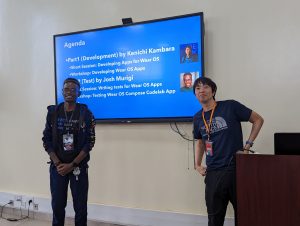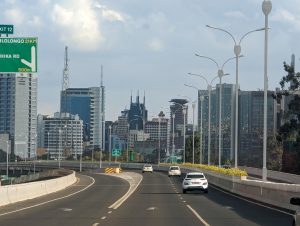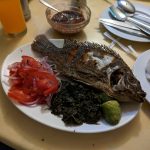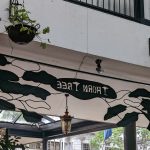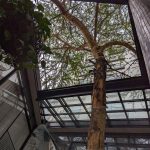(More Kenya notes)
After two nights sleeping sitting up on planes, I slept like a rock, and woke up late. I had breakfast in the hotel restaurant. The chai, which apparently people now call African tea, rather than chai, was just amazing.
After breakfast I walked to the city market – just over 2 miles. I have been told, since, that this was probably not the smartest thing I ever did, due to the recent surge in crime, but I felt very safe. Nobody appeared at all sinister or threatening. Really the only even uncomfortable thing was all of the young kids begging, which is always so heartbreaking, no matter what country I encounter it in.
The new expressway (more on that in a later post) is very disruptive, and appears to have erased a lot of pedestrian paths, leaving wide swaths of mud and broken sidewalks, which was annoying. And the sidewalks that exist would suddenly disappear in a mud pit, or even a deep hole.
Downtown looks somewhat familiar, but a lot is new. The CBD – Central Business District – is fairly crowded, and there are kiosks everywhere selling everything.
I went to the city market, and it was much as I remembered it, although there were no tourists there at all, as far as I could tell. In fact, the entire time I was downtown, the only other foreigners (ie, white people) I saw were *inside* the Stanley Hotel.
I got a couple of kikois, and some bracelets, and I’m confident I paid about 3 times what I should have, even after bargaining a little. And I walked around the inside of the market for a bit. I suspect that some of the tour companies bring tourists there to do their shopping, since almost everything was souvenirs, in that part of the market. The old food market was of course still there, smelling as strongly of fresh fish as ever.
I walked around downtown a bit more, seeing a few familiar places, and more unfamiliar ones. And I finally made it over to the Sarova Stanley (formerly the New Stanley, formerly the Stanley) and the Thorn Tree Cafe.
When I was a kid I used to go to the Thorn Tree in Saturday mornings for samosas and chai, which then cost about 5 shillings. It was much the same as I remembered it, although the tree died in 1998, and was replaced, and has been replaced again since then, so it’s still pretty small compared to the monster tree that was there when I was a kid.
The last week I was in Kenya, I went to the Thorn Tree, and ordered my usual, and thought about how it was the last time I would ever get to do that. So it was delightful to have chai and samosas again at the thorn tree, although so much has changed since then.
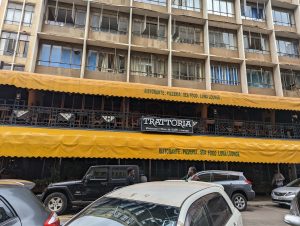
Another familiar site was the Trattoria, looking exactly as I remembered it. (That’s also one of only two Jeeps, in that photo, I have seen the entire time I’ve been here.)
I took a cab back to the hotel, since by that point I had walked about 6 or 7 miles, and was carrying all that stuff.
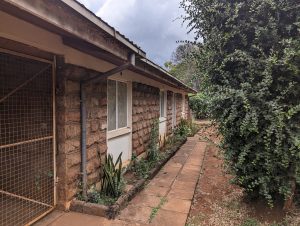
After resting a bit, I decided to go out to Karen, and visit some of the places I knew as a kid. There, too, I encountered everything completely different. I went to NEGST (now renamed to Africa International University) and saw my old house. That was much the same, although nobody was home. And the rest of campus was very different – all of the original buildings are still there, although they’re very run down. And there are many new buildings, several named after people I knew.
Next, I visited Nairobi Academy, although it was about 4:30 by the time I got there, and most of the staff had already left. Not that there would have been anyone left who knew me. I signed the visitors book and walked around a little. It was largely as I remembered it, although there are a few new buildings.
One more note, the guy that took me out to Karen, drove me for more than 3 hours, and waited for me 15 or 20 minutes at each place we went. For all of this, he charged me 4000 ksh, which comes to right around $32. It cost me twice that to go from DTW to my hotel in Detroit, which was maybe 15 miles. Meanwhile gas costs right around $6/gal. I’m not sure how he makes ends meet. He also provided some sightseeing pointers, and marveled at this being the first trip back in 34 years.
Nostalgia isn’t what it used to be, as the old saying goes. (If it’s not an old saying, it should be.) I don’t know what I expected, but it was somewhat disappointing, nevertheless. But I’m glad I got to see them.

